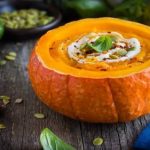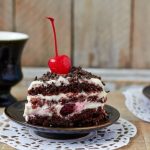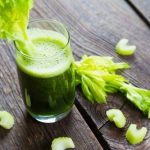"Food and drink whose appearance, smell, taste and touch delight the senses create the vital essence of all living beings."
Hans H. Rhyner.
Isn't it overdue to deal with the Ayurvedic teachings in more detail? After all, I mentioned it in passing in my last article about the "Diet Compass" by Bas Kast. Namely as a spiritual holistic nutritional science. A "steep" threaded by the universe? Let's see.
Because so far I made around closed working teachings, as for example also the macrobiotics, rather a bow. Instead, I always tried to find the truth through my own experiences.
Is it time now to approach Ayurveda more than before? And how?
Occasionally I already met some people who wanted to correct their eating disorders and "diseases" with Ayurveda. Who had even booked a special cure in India for this purpose.
From their stories, it stuck with me that it was definitely an exclusive, expensive pleasure, with no guaranteed success.
Preliminary note
"Without guaranteed success" are probably any cures, if they do not take into account mental reasons of disharmonies or "diseases".
However, on the other hand, this does not mean that they are ineffective. And now I am very curious myself, whether the Ayurvedic diet or the integration of its laws also helps me a little bit to come into harmony.
Because my autodidactic long-term attempts with my eating behavior did not lead so far to the longed-for success.
Maybe you like to look over my shoulder during my first explorations? It starts immediately:
At the beginning: The Dosha Test
Before I go on an expensive trip to India, I prefer to look in the neighborhood first. I quickly find some practice addresses for Ayurveda consultation on the Internet and save them as bookmarks. Maybe I will make an appointment.
On several pages I find so-called "Dosha Tests" to determine my type: Vata, Pitta or Kasha.
* (Compare also with other type systems.)
That sounds like an easy way to start, doesn't it? So I do several of these tests. Several, to check them for agreement or disagreement.
In the first test, I'm pretty clearly a Kapha type, even though the other types aren't very far off. In two other tests, I'm more of a Vata type, with proximity to Kapha. And in the last test, which I did on the blog site "ayurveda-schatztruhe.de", all 3 types are pretty much balanced in me. OK, for a first rough orientation this is enough for me for now.
"Follow your own intuition"

It seems to be very comprehensive, also equipped with tables, many details and over 100 recipes.
Fortunately, I am reassured right on the first pages: with Hans Rhyner's plea for our own individual intuition, which we can rely on. With our senses, we are able to precisely sense which foods are suitable for us and how much of them we should eat.
With his easy to understand introduction to types as well as food types, I at least have a basic understanding right away.
"Prefer regional foods"
I'm a bit surprised when I read that we should definitely prefer regional foods. A few months ago I had made an Ayurvedic detoxification cure. With a lot of spices, whose names I had never heard, and which do not come from the (northern German) region at all.
In any case, the practice seems to be much less exotic than the Indian origin of Ayurveda would suggest. By the way, Hans Rhyner also recommends to always buy fresh food instead of frozen food or industrially produced products.
Another thing that strikes me is that I am in positive resonance with the content of the book from the very beginning. And I know I don't have to read it all the way through right away, but can allow myself to browse through it at my leisure. Even to try out one or the other recipe right away.
There are six flavors:
Sweet, sour, salty, spicy, bitter and tart. They seem to promote or inhibit the basic types Vata, Pitta and Kasha. Our senses and intuition help us to spontaneously find what we need at the moment.
Nevertheless, I increasingly realize that a basic understanding of the interactions can greatly help me to avoid the previous mistakes.
Sweet tastes are dominantly important for building the body, for energy and vitality. I remember a wonderful, delicious pea soup I was served at a Demeter farm many years ago. Quite different from home-cooked pea soup, this one had a surprising natural sweetness and variety of flavors. It was the most delicious thing I had eaten in a long time.
Do similar wonderful dishes await me when I try the Ayurvedic recipes?
By the way, a typical Ayurvedic lunch is composed of ingredients of all flavors. If possible in several courses. Sweet and sour should not mix.
In case of - usually - lack of time, this can also be simplified to a meal with dessert.
Ayurveda does have psychological causes in mind.
Especially in the case of various eating disorders, Kerstin Rosenberg writes, the psychological causes are important and should be treated concomitantly. She writes:
"An eating disorder is a disturbance of natural eating behavior. It is compulsive behavior to compensate for feelings. Eating disorders are avoidance behavior, escape, helplessness, refusal and silent protest, but at the same time resignation and adaptation, reactions to unsatisfactory living conditions."
"Our body is the repository of all our experienced emotions."
In "Das große Ayurveda Ernährungsbuch" Kerstin Rosenberg goes into detail about the various forms of eating disorders as well as the underlying emotions and describes how targeted and adapted Ayurvedic nutrition with therapeutic guidance can lead to overcoming the disorders and achieving true harmony.
The Indian Anita Moorjani writes in her book "Dying to be ME" that during her "cancer illness", before her near-death experience, she was tossed back and forth by many different therapy recommendations. The therapy that was the only one that really did her good was Ayurveda. Unfortunately, other concepts that were suggested to her ruined the success.
Books and Blogs
Purchasing the book presented above is a stroke of luck. A good choice - both as an introduction and for more intensive study. In the meantime I ordered another one: Ayurveda Handbuch der Energietypen – Die Grundlagen des Ayurveda by Jutta Mattausch.
In any case, there is enough literature, and if you are interested, you will surely find the right book for you.

Also with the help of Ayurveda blogs it is easy to approach the topic. In the sidebar I have therefore linked 6 blogs. Very helpful I find the already above mentioned Blog.
Now I am the one who enjoys information presented in small bites and meaningful topics in a blog. Just the thing for a relaxed, easy start.
Trying out a recipe here, reading a small blog article there, sometimes thinking about the 3 types and their further 4 combinations - so the occupation with the topic can be just as much a pleasure as the food prepared according to Ayurvedic recipes.
I hope this article also provides you with some useful ideas for your path to harmony. Feel free to write a comment if you have any questions or comments.
These articles fit the topic well:



















Lieber Reiner alle deine Beiträge waren für mich sehr Lehrreich ich versuche auch alles mitzubekommen. ich bin ja erst 87 aber ichhabe ja auch meine Richtung und da geht es im Moment richtig zur Sache:ernährung Entgiftung und viele andere Informationsmöglichkeiten wie Telegram. Lieber Reiner Liebe Grüße aus Portugal und frohes schaffen klaus
Danke lieber klaus für Deine Zeilen und Grüße! Ich wünsche Dir Erfolg bei der Entgiftung. Schreibe hier gern, was Dir am besten geholfen hat, und auch, was nutzlos war.
Herzliche Grüße! Rainer